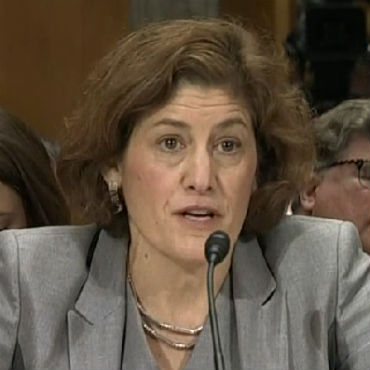OPM's push for equal pay isn't new

Beth Cobert has called for a renewed focus on the persistent pay gap between men and women in the federal workforce, with an emphasis on pay flexibilities that benefit men. But her efforts are only one step on a longer journey.

Acting Director Beth Cobert wants agencies to focus on special hiring authority as one way to address the federal government's gender pay gap.
Office of Personnel Management Acting Director Beth Cobert is reminding agencies of ways they might remedy the persistent pay gap between men and women in the federal workforce.
But it’s more of a nudge than a “breakthrough policy.”
The gap depends on how you look at it
In a July 30 memo to agency leaders, Cobert reaffirmed that when using General Schedule pay-setting flexibilities to give a new hire a pay bump, leaders should look beyond that new hire’s prior salary.
“[Prior salary] is just one of a whole list of factors, and it needs to be considered among other factors,” said Jeanne Jacobson, OPM’s pay and leave head, pointing to competing job offers, the level and type of a candidate’s skills, labor market conditions and the appeal of a job’s geographic location as other factors that could impact salary setting.
This push kicked off with President Barack Obama’s May 2013 call for equal pay, followed a year later by an extensive OPM report on pay inequality across the government.
That report’s findings: In 2012, the average female salary was only 87.3 percent of the average male salary in 2012 (for General Schedule hires, it was 89.2 percent).
But that pay gap of roughly 12 percent doesn’t tell nearly the whole story.
The overall gap has shrunk consistently, from 30 percent in 1992 to less than 20 percent in 2002 to 12.7 percent in 2012. Across occupational groups, women actually made more on average than men in 15 of 37 categories, and they’re continuing to make rapid gains. “Females received 50.1 percent of promotions [in 2012] even though they made up just 46.3 percent of the total White Collar workforce,” the report noted.
It’s all about jobs
So why are men, on average, still making more than women?
Occupational distribution.
Men tend to have an outsized presence in engineering, IT and managerial positions that pay more – and they tend to receive the benefits of pay-setting flexibilities as feds struggle to fill those roles with qualified people.
“In 2012, the percentage of male new hires receiving these [pay-boosting] actions was 12.6 percent, while the corresponding percentage of female new hires was 8.3 percent,” OPM found. “The differences in the distribution of males and females across occupational categories appear to explain much of the pay gap.”
Using private-sector salaries as a baseline for government pay could benefit men more than women, especially considering that men tend to bargain more often for their private-sector wages. It’s a phenomenon so pronounced that Reddit went so far as to ban pay bargaining in April in a bid to promote equal pay between the sexes.
And of course, getting more female tech and management recruits would help balance the scales.
“If we saw more equal number of women and men in [the managerial and technical] jobs that pay more … it would help close the gap,” Jacobson said.
OPM has hosted webinars recently to just those ends, focusing on recruiting women into both tech and leadership.
“The government should recruit from all sources,” Jacobson noted as a caveat. “We’re not saying this policy should target women in any way.”
OPM found that special pay authority was used for some 10 percent of all new General Schedule hires in 2012. Is that rate contributing to the gap?
“We don’t put a limit or specify a number” on how often the authority can or should be used, Jacobson noted. And Cobert’s memo isn’t necessarily aimed at getting the authority’s use-rate down for male hires; it’s about “not using that existing pay [as the sole reason] to deny the use of the authority,” for women or anyone else, Jacobson said.
She noted that “there was no significant pay gap” between men and women when comparing strictly between people at the same grade levels.
OPM has advised that individual agencies follow up with studies of their own, but the personnel office isn’t tracking those studies.
“We have had agencies reach out and ask” about methodology, indicating some interest level, Jacobson said. FCW reached out to several agencies on the topic, but none were able to point to an ongoing study.
“This memo is just kind of hitting one piece,” Jacobson noted, saying there are many other factors to consider when pursuing equal pay.
What’s the final result? Is a perfect balance across the entire federal workforce an achievable aim?
“Our goal is to close the pay gap,” Jacobson said.
NEXT STORY: Metrics key to measuring success on IT projects


